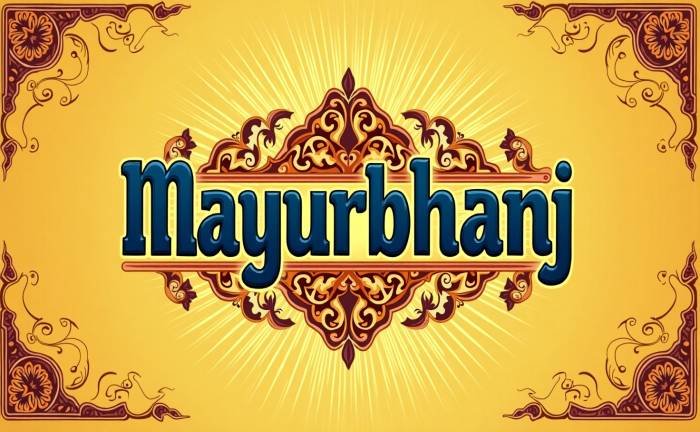How Mayurbhanj is Shaping Sustainable Farming Practices

Let’s talk about Mayurbhanj. It’s a district that’s making big moves in sustainable farming. I’ve spent time with some amazing farmers here. Their stories show how mixing old ways with new ideas works. This post will look at the new methods used in Mayurbhanj. It will show how they are building a greener future for farming.
Why is Farming in Mayurbhanj Different?
Why does Mayurbhanj stand out? I can tell you from my time here. It has a lot of different plants and animals. Many tribal people live here. They are deeply connected to the land. Old farming methods in it were already good for the earth.
They rotated crops and used natural fertilizers. Today, they are mixing this old wisdom with new eco-friendly ways. This helps them meet the needs and solve the problems of the area.
| Feature | Old Ways in Mayurbhanj | New Green Ways in Mayurbhanj |
| Feeding Soil | Using cow dung, old leaves | Using worm compost, green manure |
| Bug Control | Natural bug sprays, planting different crops | Using Integrated Pest Management (IPM) |
| Water Use | Relying on rain, small ponds | Using drip irrigation, collecting rainwater |
| Crop Variety | Growing many kinds of crops together | Growing local crops |
| Soil Health | Not tilling too much | Not tilling, using cover crops |
How Do Local People Drive Change?
The real power behind Mayurbhanj’s green farming is its people. Farmers here, often in small groups, are leading this change. I’ve seen these groups, like “Jeevan Dhara” in Baripada, taking part in classes.
They share what they know. They work together to sell their green products. This local effort helps green farming last for a long time in it .
How Do Government and NGOs Help?
Government plans and NGOs help a lot with green farming in Mayurbhanj. These groups teach people about organic farming and saving water.
They also give money to farmers who use green methods. This teamwork between the government, NGOs, and local people makes it easy to adopt green farming in it.
What are the Main Green Farming Methods Used?
Mayurbhanj is a real-life lab for green farming. Organic farming is getting big here. Farmers in it are using natural fertilizers like worm compost. I was impressed by the simple drip watering systems.
They help small farmers save water. Planting trees among crops, called agroforestry, is also popular. It helps the land and the farmers’ wallets. A system to fight bugs, called IPM, also helps keep pests away the natural way.
How Does This Affect Soil and Nature?
Green farming is making the soil and nature in Mayurbhanj much better. Organic farming makes the soil richer. This helps crops grow better and survive dry spells.
By avoiding harsh chemicals, farmers in it are creating a healthier world for plants and animals. Growing different kinds of crops also helps keep the local nature strong.
| Impact Area | Good Changes Seen in Mayurbhanj | Green Methods Used in Mayurbhanj |
| Soil Health | More water and microscopic life can be found in richer soil. | Organic farming, cover crops, less tilling |
| Nature | More helpful bugs, birds, and animals | Agroforestry, mixed crops, less bug spray |
| Water Quality | Less pollution from chemicals | Organic farming, smart use of fertilizer |
| Weather Resilience | Soil can store more carbon and fewer climate-harming gases | Agroforestry, smart farming |
How Do Mayurbhanj They Manage Water?

Saving water is key to green farming. Mayurbhanj is doing great at this. Farmers here are using new watering methods. Plant roots receive water directly from drip systems.
This saves a lot of water. I’ve also seen old ponds being fixed up. New ones are also being built. They collect and store rainwater. This ensures smart and lasting water use for farming in it .
Why Grow Local Crops?
Mayurbhanj has many local crops. They grow well in the local weather and soil. Green farming in Mayurbhanj focuses on saving these old crops.
These crops are often more nutritious. They also handle bugs and diseases better. By growing them, farmers in it are protecting their food history and nature.
What are the Challenges and Future Plans?
Mayurbhanj has done well with green farming, but there are still hurdles. Not all farmers know about these methods. They also need help selling their green food.
The next steps are clear. We need to build stronger farmer groups. We must also invest in new, local farming tools. New policies that support green farming will also help.
How Does Green Farming Help Farmers’ Wallets?
Green farming in Mayurbhanj is not just good for the earth. It also helps farmers earn more money. They spend less on costly chemical fertilizers and bug sprays.
Also, their green food often sells for a higher price. Over time, healthier soil leads to better harvests. This gives farmers in it a more stable income.
How Do We Connect Green Food to Buyers?
Connecting farmers with consumers is essential to the success of green farming. When buyers can find food from green farmers, it helps everyone.
Local markets, online sales, and stores that care about green sourcing are key. They help promote the food grown in it . An infographic that depicts the path of organic food from farm to table
Can Mayurbhanj Be a Model for Others?
What Mayurbhanj is doing can teach other places a lot. It shows how local people, old knowledge, and new methods can work together.
The help from the government and NGOs is also key. it focus on saving nature and improving soil shows that we can farm in a way that helps both people and the planet.
What’s Next for Green Farming in Mayurbhanj?
The future of farming in Mayurbhanj is bright. Green farming is the main idea. We will keep helping local people.
We will also support new ideas and better ways to sell the food. The long-term goal for it is to be a top example of a place where farming and nature live in harmony.
Conclusion:
One important figure in the green farming movement is Mayurbhanj. It shows that farming can be both productive and kind to the earth. The work being done in it gives us great ideas for making food systems around the world more sustainable.
FAQs
What is the best time to visit it ?
October to March is ideal. The weather is nice, and it’s perfect for seeing parks and cultural sites.
What languages are spoken in Mayurbhanj?
Odia is the main language. Santali and Ho are also common due to tribal groups in Mayurbhanj.
What are the top places to see in Mayurbhanj?
Simlipal Park, Devkund Waterfall, and Joranda Falls are popular tourist spots in Mayurbhanj.



